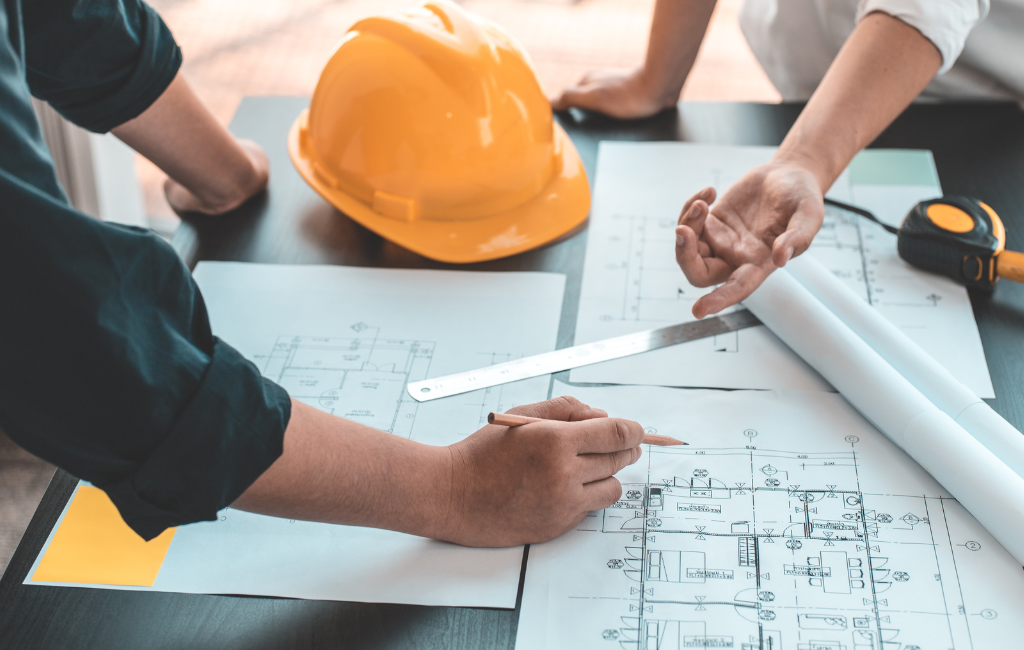Architect’s Approach to Biophilic Design
When you consider the architect’s approach to biophilic design, it’s clear that integrating nature into built environments can transform how we experience spaces. This method emphasizes not just aesthetics but also well-being and productivity, inviting you to rethink the relationship between architecture and nature. By exploring the principles behind this design philosophy, you’ll uncover how sustainable practices and natural elements can create healthier atmospheres. Yet, the implications stretch beyond individual buildings—what might this mean for urban spaces and our collective future?
Definition of Biophilic Design
Biophilic design is all about creating spaces that connect people with nature, enhancing well-being and productivity. It’s a design philosophy rooted in the innate human desire to bond with the natural world. This approach encourages you to incorporate natural elements into your environment, whether you’re designing a home, office, or public space.
You’ll notice that biophilic design often features natural light, plants, water elements, and materials that reflect the outdoors. By doing this, you can foster a calming atmosphere that reduces stress and boosts creativity.
The idea is that when you interact with nature, even indirectly, you’ll feel more relaxed and focused. Think about how you react when you’re surrounded by greenery or hear the sound of flowing water.
That’s the essence of biophilic design. It’s not just about aesthetics; it’s about creating a healthier, more productive environment.
Key Principles of Biophilic Design
There are several key principles that guide biophilic design, each aiming to strengthen your connection to nature. First, consider incorporating natural elements like plants, water features, and natural materials into your space. These elements evoke a sense of tranquility and help create a more inviting environment.
Next, focus on maximizing natural light. Large windows and skylights not only brighten your space but also provide a direct link to the outdoors. You’ll find that daylight can enhance your mood and productivity.
Another principle is the use of organic shapes and forms. Instead of rigid lines and sharp angles, opt for curves and asymmetrical designs that mimic nature’s patterns. This approach fosters a more comfortable and calming atmosphere.
Additionally, aim to create visual connections with nature. This can be achieved by positioning your furniture to face windows or incorporating artwork that depicts natural scenes.
Lastly, consider the sounds of nature. Incorporating soft background sounds like flowing water or birds can reinforce your connection to the natural world.
Benefits for Mental Health
Nature’s influence can considerably enhance your mental health and well-being. By incorporating biophilic design into your environment, you can experience reduced stress, anxiety, and depression. Surrounding yourself with natural elements—like plants, water features, and natural light—creates a calming atmosphere that promotes relaxation and mental clarity.
When you engage with nature, even in small doses, your mood improves. You might notice increased focus and productivity, allowing you to tackle tasks more efficiently. Biophilic spaces encourage mindfulness, helping you to stay present and connected to your surroundings. This connection can foster a sense of belonging and community, essential for your emotional well-being.
Moreover, exposure to nature can stimulate your creativity. When you’re inspired by natural forms and colors, you may find new perspectives and solutions to problems. Incorporating these elements into your daily life can lead to a more positive outlook and a healthier mindset.
Ultimately, prioritizing biophilic design in your spaces allows you to tap into nature’s therapeutic benefits, promoting a happier, healthier you. It’s a simple yet powerful way to enhance your mental health and enrich your overall quality of life.
Enhancing Urban Spaces
As cities continue to expand and evolve, enhancing urban spaces through biophilic design becomes essential for fostering a sense of community and well-being.
You can make a significant impact by integrating natural elements into urban environments. Think about incorporating greenery in the form of parks, vertical gardens, and green roofs. These features not only beautify the surroundings but also improve air quality and provide habitats for wildlife.
Consider designing walkable pathways that connect neighborhoods, inviting residents to engage with their environment and each other. Incorporating water elements like fountains or ponds can create calming spaces that draw people in, encouraging relaxation and social interaction.
You might also explore using natural materials in architecture to create a seamless blend between built and natural environments.
Case Studies in Biophilic Design
Biophilic design has proven its effectiveness through various case studies that showcase its transformative impact on urban environments. You can see how integrating natural elements not only enhances aesthetic appeal but also improves well-being among residents. For instance, the Bosco Verticale in Milan incorporates vertical gardens, creating a lush environment that fosters biodiversity. In Singapore, Gardens by the Bay merges architecture with nature, providing a stunning green space that attracts both locals and tourists.
Here’s a snapshot of notable case studies:
| Project Name | Location |
|---|---|
| Bosco Verticale | Milan, Italy |
| Gardens by the Bay | Singapore |
| High Line | New York, USA |
| One Central Park | Sydney, Australia |
| The Eden Project | Cornwall, UK |
These examples illustrate how biophilic design can rejuvenate urban settings, encouraging social interaction while promoting mental and physical health. By adopting similar principles in your projects, you can create spaces that resonate with nature and foster community well-being.
Sustainable Materials and Practices
When you choose sustainable materials for your projects, you’re not just making an eco-friendly statement; you’re also enhancing the overall health of your space.
Incorporating energy-efficient design practices can considerably reduce your carbon footprint while creating a more comfortable environment.
Let’s explore how these choices can transform your design approach.
Eco-friendly Material Selection
Eco-friendly material selection is essential for creating spaces that not only look good but also benefit the environment. When you choose sustainable materials, you’re making a conscious decision to reduce your ecological footprint while enhancing the aesthetic appeal of your design.
Opt for materials that are renewable, recycled, or have low environmental impact in their production processes. Consider using bamboo, reclaimed wood, or recycled metal and glass. These materials not only reduce waste but also add unique character to your spaces.
By sourcing locally, you can decrease transportation emissions and support your community, which further aligns with sustainable practices. Pay attention to the life cycle of materials too. Choose those that are durable and require minimal maintenance, reducing the need for replacements and repairs over time.
Additionally, look for materials that contribute to better indoor air quality, such as natural paints and finishes, which are free from harmful chemicals. Ultimately, your choice of materials can greatly influence the overall health of both your environment and the occupants of your space.
Energy-efficient Design Practices
Choosing sustainable materials naturally leads to a focus on energy-efficient design practices, which play a vital role in minimizing environmental impact. When you select materials that aren’t only eco-friendly but also energy-efficient, you’re taking a significant step towards reducing your building’s carbon footprint.
Incorporating high-performance insulation, for instance, can drastically reduce heating and cooling costs, making sure your space is comfortable year-round.
You can also consider using windows with low-emissivity (Low-E) coatings, which help to reflect heat while allowing natural light to enter, maximizing energy efficiency.
Additionally, think about renewable energy sources like solar panels. By integrating these into your design, you’re not just cutting down on energy consumption; you’re also creating an opportunity for energy generation on-site.
Moreover, using energy-efficient appliances and fixtures throughout your space guarantees that every element contributes to a lower energy demand.
By focusing on these energy-efficient design practices, you’re not only enhancing the sustainability of your project, but you’re also creating a healthier, more comfortable environment for occupants.
Embrace these strategies and watch your vision for a biophilic, energy-efficient space come to life!
Future Trends in Biophilic Architecture
As you explore the future of biophilic architecture, you’ll notice a shift toward nature-inspired materials that enhance both aesthetics and sustainability.
Urban green spaces are also gaining traction, transforming cities into healthier environments.
These trends not only harmonize our built surroundings with nature but also promote well-being for everyone.
Nature-Inspired Materials
In the domain of biophilic architecture, the integration of nature-inspired materials is shaping the future of design in exciting ways. You’re likely to see a growing emphasis on using materials that mimic the textures, colors, and forms found in nature.
Think about how wood, stone, and clay can create a warm and inviting atmosphere while promoting sustainability.
You’ll find that designers are increasingly opting for biomimetic materials—those that draw inspiration from natural processes. For instance, materials that enhance energy efficiency or improve indoor air quality are becoming more common.
By incorporating these elements, you’re not just creating a beautiful space; you’re also fostering a healthier environment.
Recycled and upcycled materials are gaining traction too, allowing you to honor nature while minimizing waste. Imagine using reclaimed wood or repurposed metals in your projects.
These choices tell a story and connect occupants to the environment.
As technology advances, you might even encounter innovative materials like self-healing concrete or bio-based polymers. They’re designed to adapt and respond to their surroundings, further deepening your connection to nature.
Embracing these trends will certainly transform your approach to biophilic design.
Urban Green Spaces
Urban green spaces are set to revolutionize biophilic architecture in the coming years, bringing nature directly into our cities.
You’ll notice how these spaces, like parks and green roofs, not only enhance aesthetics but also improve urban living conditions. Imagine stepping outside your apartment to find a lush garden or a rooftop oasis where you can unwind.
As you explore these developments, you’ll see that urban green spaces promote biodiversity, helping to support local ecosystems. They act as natural air filters, reduce heat, and manage stormwater, making your environment healthier and more sustainable.
Future trends will likely emphasize multifunctional spaces that blend recreation, relaxation, and community engagement.
You’ll find trails for jogging, spots for yoga, and areas for social gatherings, all integrated into the green fabric of your city.
Frequently Asked Questions
How Can Biophilic Design Be Implemented in Small Residential Projects?
You can implement biophilic design in small residential projects by incorporating natural materials, maximizing natural light, creating green spaces, and using organic shapes. These elements enhance well-being and connect you to nature, making your space more inviting.
What Are Common Misconceptions About Biophilic Design?
You might think biophilic design only involves plants, but it’s more. It’s about creating a connection with nature through materials, light, and space. Also, it’s not just for large projects; small spaces benefit too.
How Does Biophilic Design Impact Real Estate Value?
Biophilic design can markedly boost real estate value. You’ll notice properties with natural elements attract higher demand and selling prices, as buyers increasingly seek environments that promote well-being and a connection to nature.
Can Biophilic Design Be Adapted for Historical Buildings?
Yes, you can adapt biophilic design for historical buildings by incorporating natural elements like plants and light while preserving architectural integrity. This blend enhances both aesthetics and functionality, making spaces more inviting and valuable.
What Are the Costs Associated With Biophilic Design Implementation?
When considering the costs of biophilic design implementation, you’ll encounter expenses for materials, labor, and potential renovations. However, investing in these elements can lead to long-term benefits like increased property value and occupant well-being.
Conclusion
Incorporating biophilic design into architecture not only connects you with nature but also enhances your overall well-being. By embracing natural elements and sustainable practices, you can create spaces that promote calmness and creativity. As urban areas continue to grow, prioritizing these principles will transform your environment, making it healthier and more vibrant. The future of architecture lies in this harmonious blend of nature and design, ensuring that your living spaces truly nurture both body and mind.

